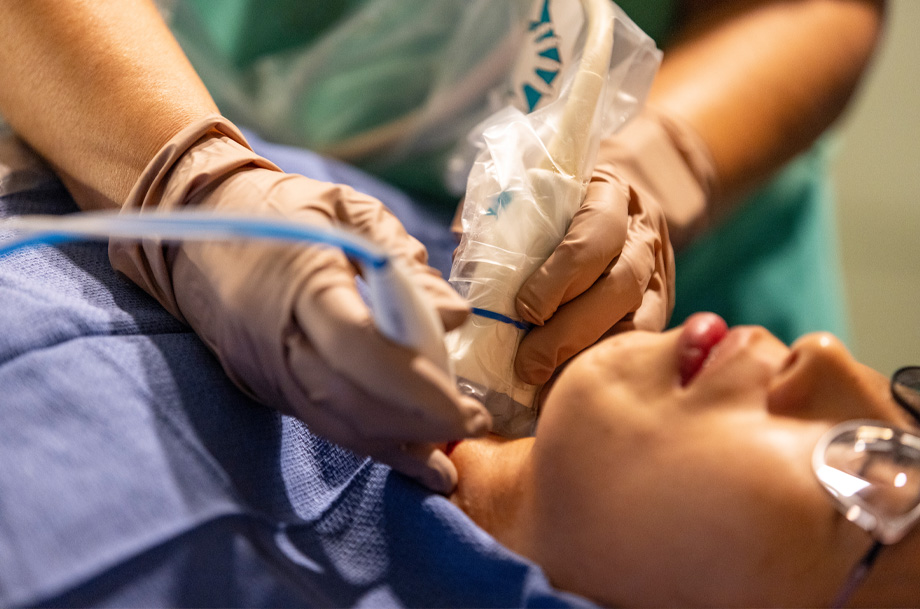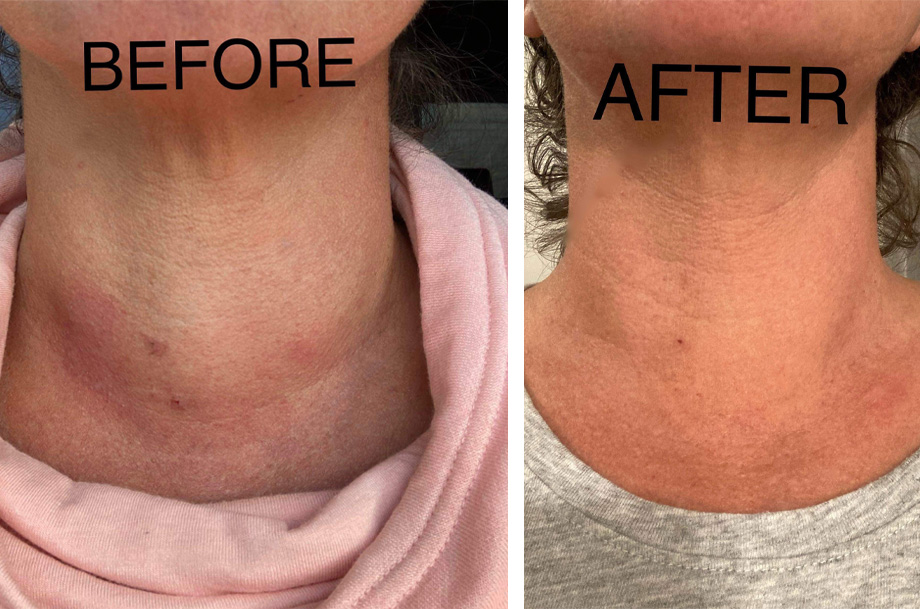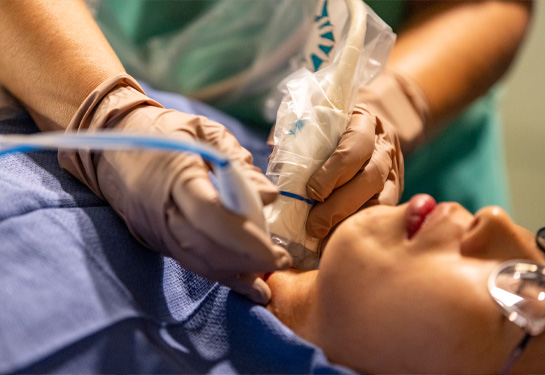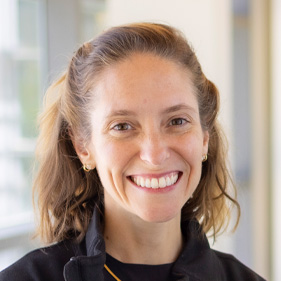Nonsurgical procedure brings relief to those with thyroid nodules
UC Davis Health surgeons use radiofrequency for innovative treatment
Tightness in the throat. Difficulty swallowing. A noticeable bump on your neck.
These are the reasons why more than 40 people have sought out the expertise of endocrinological surgeon Claire Graves. Some have come from as far as Idaho for a procedure only available in a few parts of the country and recently offered at UC Davis Health.
Surgery alternative with little down time
Radiofrequency ablation (RFA) is a nonsurgical, outpatient treatment that is an alternative to surgery in some patients with thyroid nodules. Nodules are lumps or growths that form in the thyroid gland, which is located in the neck below the Adam's apple. Nearly half the population experiences nodules and the majority of the nodules are non-cancerous, or benign.
Learn about thyroid nodule ablation and thyroid RFA
Treating these growths through RFA is new in the U.S. Doctors first starting using the procedure successfully in in Korea in 2006, and surgeons began using it in the U.S. around 2020. Graves learned the procedure under one of the first surgeons in the country to perform it. She knew she wanted to bring it to patients in Northern California when she joined the endocrine surgery team four years ago. She teamed up with radiologist Sima Naderi and formed the UC Davis Center for Interventional Thyroidology.
The procedure is minimally invasive and performed with local anesthesia.

“We use a needle-based probe that has an active tip at the end. The tip delivers small, localized electricity that essentially works like a mini microwave to cook the cells around it and they die,” Graves explained. “It takes about 45 minutes, then patients can go home later that day. The nodule shrinks over time. After a year, it’s 50-80% smaller than it was.”
Explore more about thyroid disorders
‘It’s truly lifesaving.’
Michelle Smith had the procedure in December 2023, more than three years after she first felt uncomfortable pressure in her throat.
“I looked in the mirror and wondered, ‘What’s going on?’ You could clearly see a little ball on my neck,” said 53-year-old Smith, who lived in Phoenix at the time. “My labs came back normal and a biopsy showed it was not cancerous. So, my physician monitored it. But six months later, it was bigger. And it just kept growing.”
As the years went by, so did the discomfort. Smith’s voice got hoarse. She kept having to clear her throat. And when she swallowed, she could feel that knot pushing on her trachea.
“Rather than have my fully functioning thyroid removed, I started doing some research. That’s when I found Dr. Graves,” Smith recalled. “My surgeon knew of her work and referred me to UC Davis.”
Smith was a good candidate because her growth was:
- benign and a low cancer risk
- not surrounded by other nodules
- solid and not a liquid-filled cyst
- not overproducing thyroid hormones
- causing discomfort and affecting her quality of life
After the procedure, Smith’s throat bump dramatically decreased. In the first three months, it decreased by 60%. Her throat clearing stopped and swallowing instantly became easier.

Graves and Naderi are conducting research to quantify the improved quality of life in patients like Smith. Patients receive a survey before the procedure and then follow-up with data six months to one year later.
“I think it’s important when you’re doing something new to compare your results to other people to determine, ‘Are we doing this correctly? Are we getting the same results that are being published?’” Graves explained.
Smith is overjoyed with her outcome.
“It was a blessing to find Dr. Graves. I’m so thankful for her,” Smith said. “I really hope more people opt for this, if they’re a candidate.”
If I can get similar results for patients with less down time, no scar and less chance of their needing replacement hormone, it’s really a win-win.—Claire Graves, endocrinological surgeon
For patients who don’t qualify for RFA because they have a completely fluid-filled or “cystic” nodule, UC Davis’s team of specialists offers an alternative — ethanol ablation. In that procedure, the surgeon injects a needle into the cystic nodule, sucks out the liquid and refills it with alcohol. Think of it as emptying and refilling a water balloon.
“I’ve been asked, ‘You’re a surgeon. Why do you offer this other thing without surgery?’” Graves recalled. “If I can get similar results for patients with less down time, no scar and less chance of their needing replacement hormone, it’s really a win-win.”





